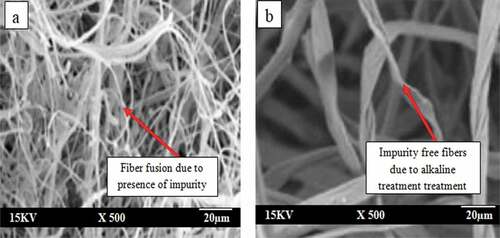Figures & data
Figure 1. Image of materials used in the study (a) palm kernel fiber (b) coconut shell (c) waste paper slurry and (d) some of the untrimmed board composites developed
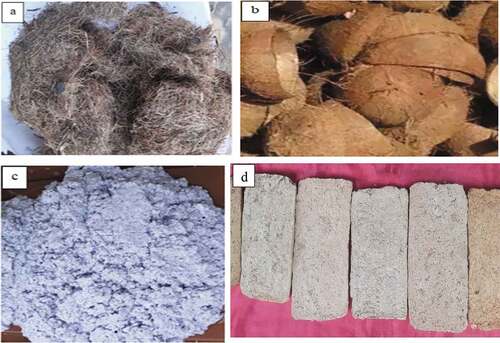
Table 1. Mix proportion of composite developed for untreated (UPKF)/treated palm kernel fiber (TPKF)
Table 2. Chemical composition of coconut shell powder additive
Table 3. Cellulose, hemicellulose, and lignin content present in paper, treated and untreated fiber
Figure 3. Effects of untreated and treated fiber addition on porosity at curing days of (a) 28 days (b) 49 days with experimental trend analysis (3 c) property evaluation of experimental variables (3d) property evaluation of experimental variables
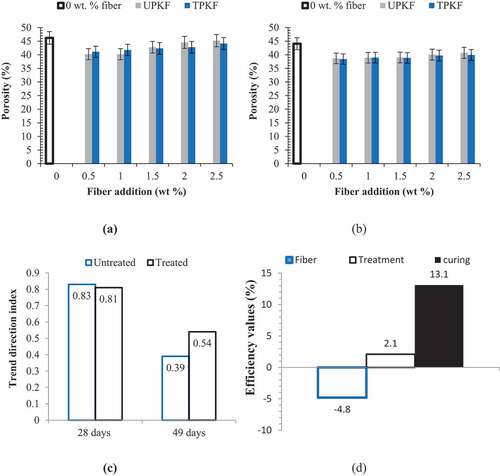
Figure 4. Effects of untreated and treated fiber addition on water absorption at curing days of (a) 28 days and (b) 49 days with (c) experimental trend analysis and (d) property evaluation of experimental variables
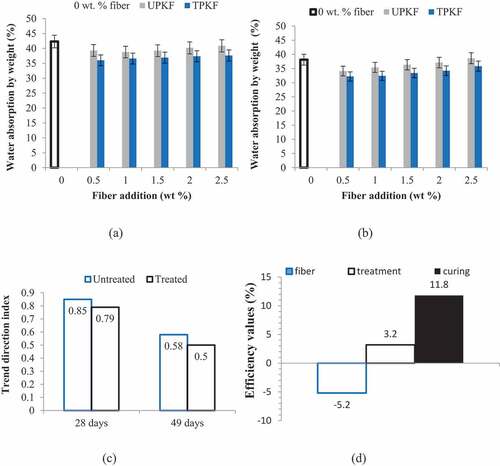
Figure 5. Effects of untreated and treated fiber addition on moisture absorption at curing days of (a) 28 days and (b) 49 days with (c) experimental trend analysis and (d) property evaluation of experimental variables
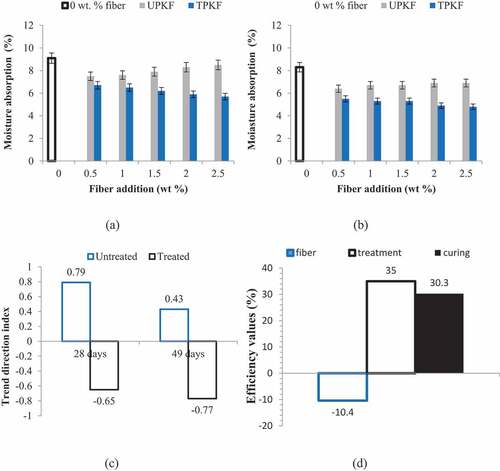
Figure 6. Effects of untreated and treated fiber addition on bulk density at curing days of (a) 28 days and (b) 49 days with (c) experimental trend analysis and (d) property evaluation of experimental variables
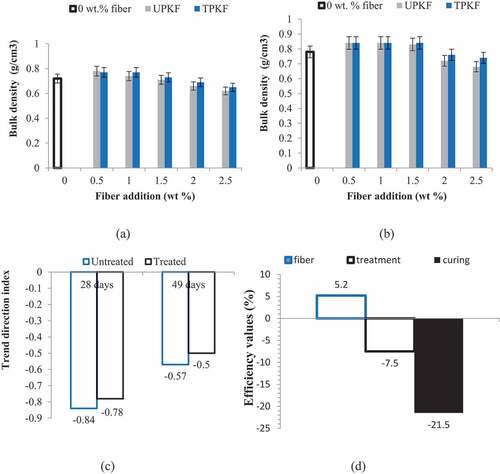
Figure 7. Effects of untreated and treated fiber addition on linear shrinkage at curing days of (a) 28 days and (b) 49 days with (c) experimental trend analysis and (d) property evaluation of experimental variables
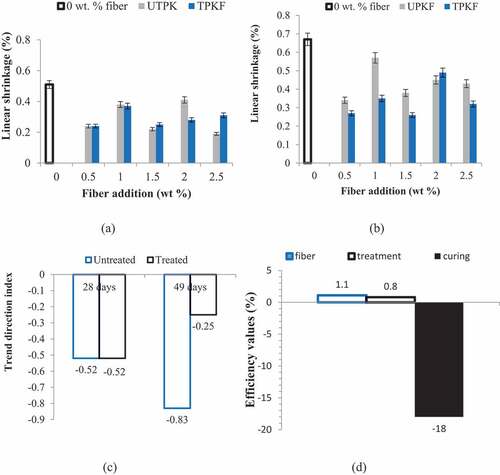
Figure 8. Effects of untreated and treated fiber addition on volumetric shrinkage at curing days of (a) 28 days and (b) 49 days with (c) experimental trend analysis and (d) property evaluation of experimental variables
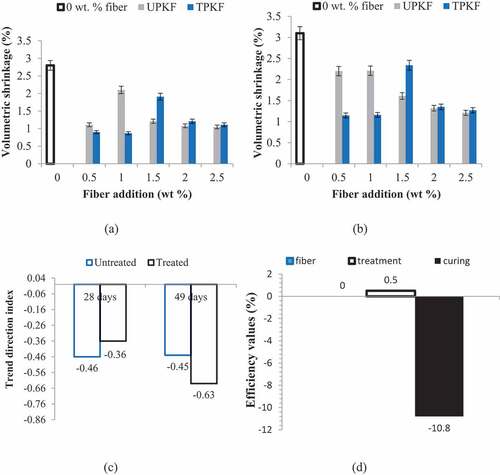
Figure 9. Effects of untreated and treated fiber addition on tensile strength at curing days of (a) 28 days and (b) 49 days with (c) experimental trend analysis and (d) property evaluation of experimental variables
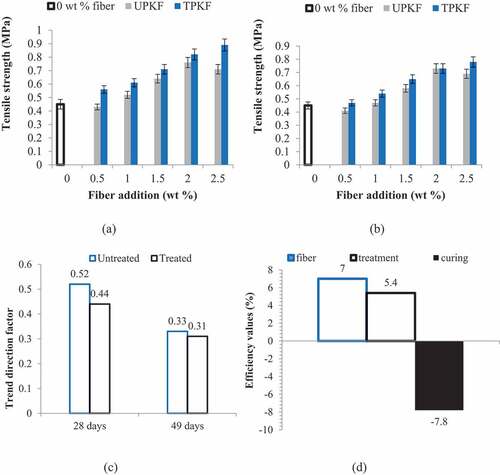
Figure 10. Effects of untreated and treated fiber addition on impact strength at curing days of (a) 28 days and (b) 49 days with (c) experimental trend analysis and (d) property evaluation of experimental variables
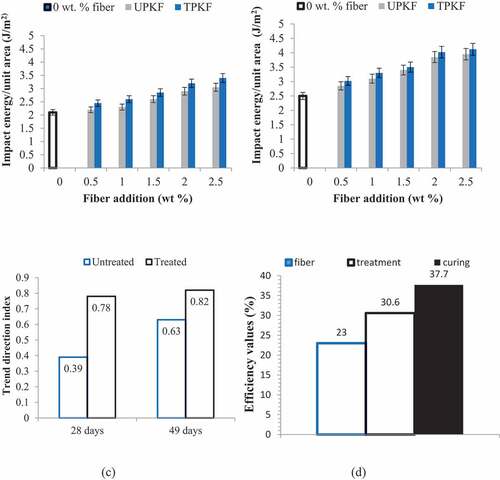
Figure 11. Effects of untreated and treated fiber addition on abrasion resistance at curing days of (a) 28 days and (b) 49 days with (c) experimental trend analysis and (d) property evaluation of experimental variables
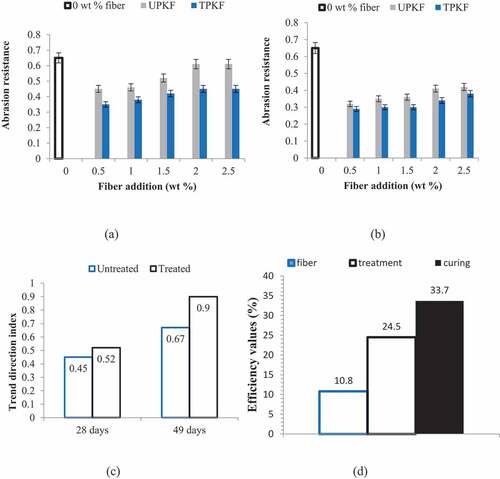
Figure 12. Effects of untreated and treated fiber addition on bursting strength at curing days of (a) 28 days and (b) 49 days with (c) experimental trend analysis and (d) property evaluation of experimental variables
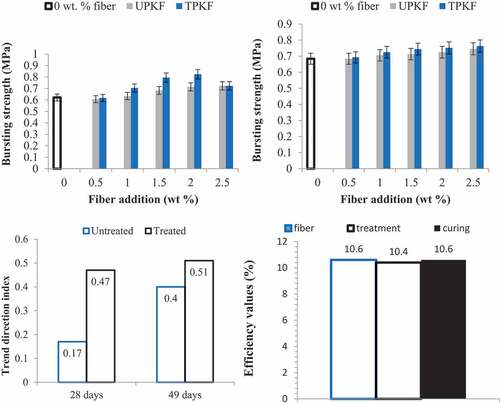
Figure 13. SEM images of samples containing varying amounts of treated fiber (0, 0.5, 1.0, 1.5, 2.0, and 2.5 wt. %) represented in a, b, c, d, e, and f, respectively
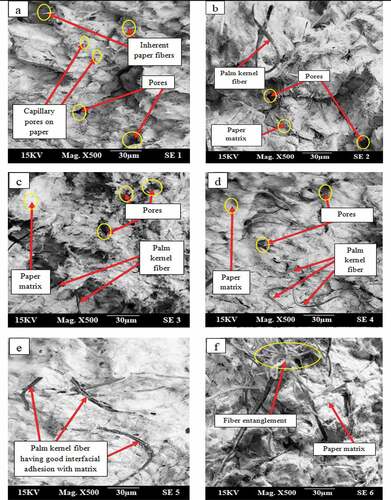
Table 4. Effective property index (EPI) for each mix proportion

